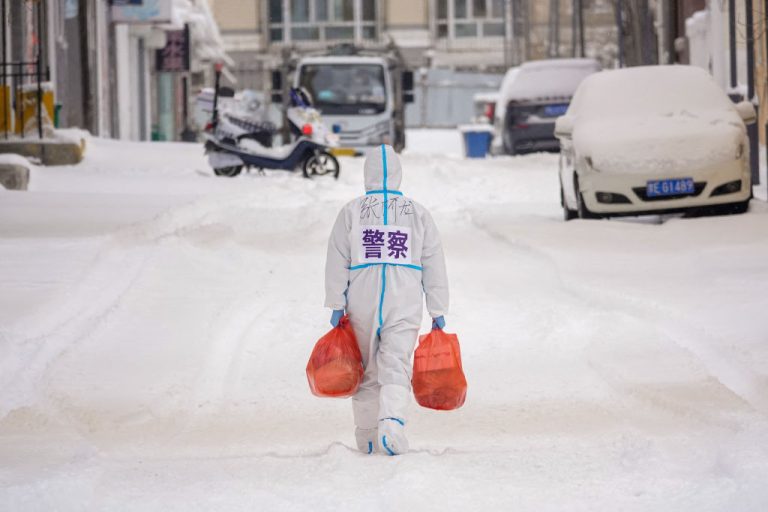Just as pandemic restrictions have begun easing in Beijing and Shanghai, residents in a city in Inner Mongolia are now being urged to stay at home after reports of a new string of COVID-19 infections have surfaced.
The National Health Commission announced on Monday, June 6 that 17 new local cases had been reported in Inner Mongolia — the third day in a row where more than 10 community cases were reported — bringing the total in this outbreak to 41. The government data also said that there had been 33 new local asymptomatic cases, amounting to 49 in total.
READ MORE ON CHINA’S CORONAVIRUS SITUATION:
- COVID-19, Lockdowns Have Many Hongkongers Suffering From PTSD: Study
- Here’s Just How Badly ‘Zero-COVID’ Has Damaged China’s Economy
- Farmers in China’s Breadbaskets Desert Crops to Comply With ‘Zero-COVID’ Restrictions
- Chinese Authorities to Locked Down Shanghai Residents: ‘Stop Asking Why,’ Beijing Introduces Daily Mass Testing
The cases prompted Erenhot — a county-level city in the Xilin Gol League — to impose a citywide lockdown, asking all residents to stay home unless they need to attend to urgent business or seek emergency medical attention.
According to a report by The South China Morning Post (SCMP) all businesses in Erenhot, except supermarkets, pharmacies and medical centers have been told to suspend operations, and travel in and out of the area has also been restricted.
Local authorities announced that there was sufficient food to meet the city’s needs for more than 30 days, and supermarkets and other businesses were continuing to replenish supplies as needed. Health officials said that online purchasing apps and non-contact delivery couriers would be used in order to get essentials and food delivered to residents.
Success
You are now signed up for our newsletter
Success
Check your email to complete sign up
The education bureau in the city also said it would set up special examination rooms for the more than 330 students scheduled to take the country’s national college entrance exams.
This isn’t the first time Inner Mongolia has been hit with new outbreaks of COVID-19, triggering travel restrictions and lockdowns. Earlier this year, more than 500 locally transmitted cases of the virus were reported from mid-February to early May. After nearly a month without reporting new cases, Xilin Gol League (one of 12 prefectures in Inner Mongolia) reported three positive cases on June 2.
Beijing and Shanghai transition to new normal
In Beijing, residents can once again dine in restaurants, and public parks and entertainment venues have reopened. The Chinese capital has reported only five new community cases this month, and has slowly allowed most businesses to resume normal operations.
Shanghai, which was subjected to some of the strictest lockdown measures ever enacted in China, has also reported just four new community cases this week. The city’s health commissioner, Wu Jinglei, told a press briefing on June 5 that scattered cases in the country’s financial hub could spread quickly if immediate actions were not taken to immediately contain the transmission chains.
“The community infections we spotted in the recent days were scattered across the city, likely to trigger a resurgence of the outbreak,” Wu said, adding that, “We must be highly alert to [virus transmission] risk, as we transition to this new normal.”
Meanwhile, in the country’s northeast, authorities in Liaoning Province are trying to track a string of asymptomatic cases. Since May 24, a total of 141 have been reported in the city of Dandong on the border with North Korea.
North Korea has been battling its own outbreak of COVID-19, with infections suspected to be in the millions. After more than two years of claiming that it had zero cases or transmissions throughout the pandemic, the authoritarian government acknowledged on May 19, that at least one person had died from the virus, and that over 300,000 people are currently undergoing treatment for a “fever of unknown origin.”














